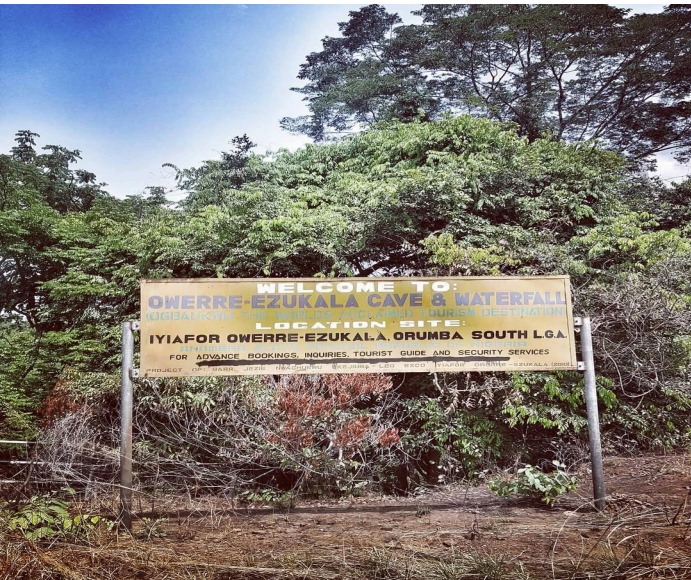In Owerre-Ezukala town, a remote area in Orumba South local government area of Anambra State, there is an overwhelming cave known as The Ogbaukwu cave. Ogba and Úkwú are Igbo words for ‘cave’ and ‘great’. Thus, Ogbaukwu means great cave. A befitting name for this majestic art of nature. It is located in Iyiafor village of Owerre-Ezukala, seventy-five kilometres east of Onitsha and borders three states: Abia, Imo and Enugu.
The cave is a natural site of limestone formation. It has a never-ending waterfall cascading beautifully into a river near its major entrance. Side attractions at the cave include the waterfall which one arrives at on descending more than sixty-seven flights of stairs to meet a massive dome near the location. It has unique compartments and crevices, as well as many entrances and exits. However, the major entrance is the one near the flight of stairs. It leads to all the other compartments. These roomy compartments are said to be capable of accommodating a whole village. Due to its enormous size, exploring the cave takes about two hours. Therefore, it is considered the largest cave in West Africa. The location is on the verge of being listed as a UNESCO World Heritage Site in Nigeria.
Interestingly, a local legend has it that the largest compartment in the cave is the abode of the god of Owerre-Ezukala who had settled disputes in the village in ancient ages. Another legend says the cave was founded by a hunter who solely defeated the wild animals he found there. What is known though, is that there are no wild animals there in current times. There are, however, proofs of ancient civilizations who may have discovered the cave. In a particular crevice, there is a natural spanner of rock, and in another, a gun of stone.
In one particular compartment, accessed by the aid of stone steps, stands an old elephant’s foot that is long dead and dry. Ancient toilets are also found in some parts of the cave. Inside the cave, is another waterfall which is said to possess healing properties, thus named Miracle Water. In the past, visits to the cave were only during the Oriri Onwa-ito annual festival held every last Saturday of March in Owerre-Ezukala. The festival is spiced with their native food, Abacha(tapioca) and fish, and performances showcasing their cultural heritage. Neighbouring towns and foreigners graced this occasion as a way of participating in this heritage and tourism.
In 2010, the Ogbaukwu Cave and Waterfall were handed over to the government by the traditional ruler of Owerre-Ezukala to promote the site as a tourist centre and for recognition as a listed UNESCO heritage site. This led to its renaming as Owerre-Ezukala Cave and Waterfall. In recent times, anyone can visit the cave and waterfall at any time and it is advised to be in the company of a tour guide.
Photo Credits:
2olas Travel and Events
Priscilla Uzoma
Adedotun Abajide
The Guardian
References:

